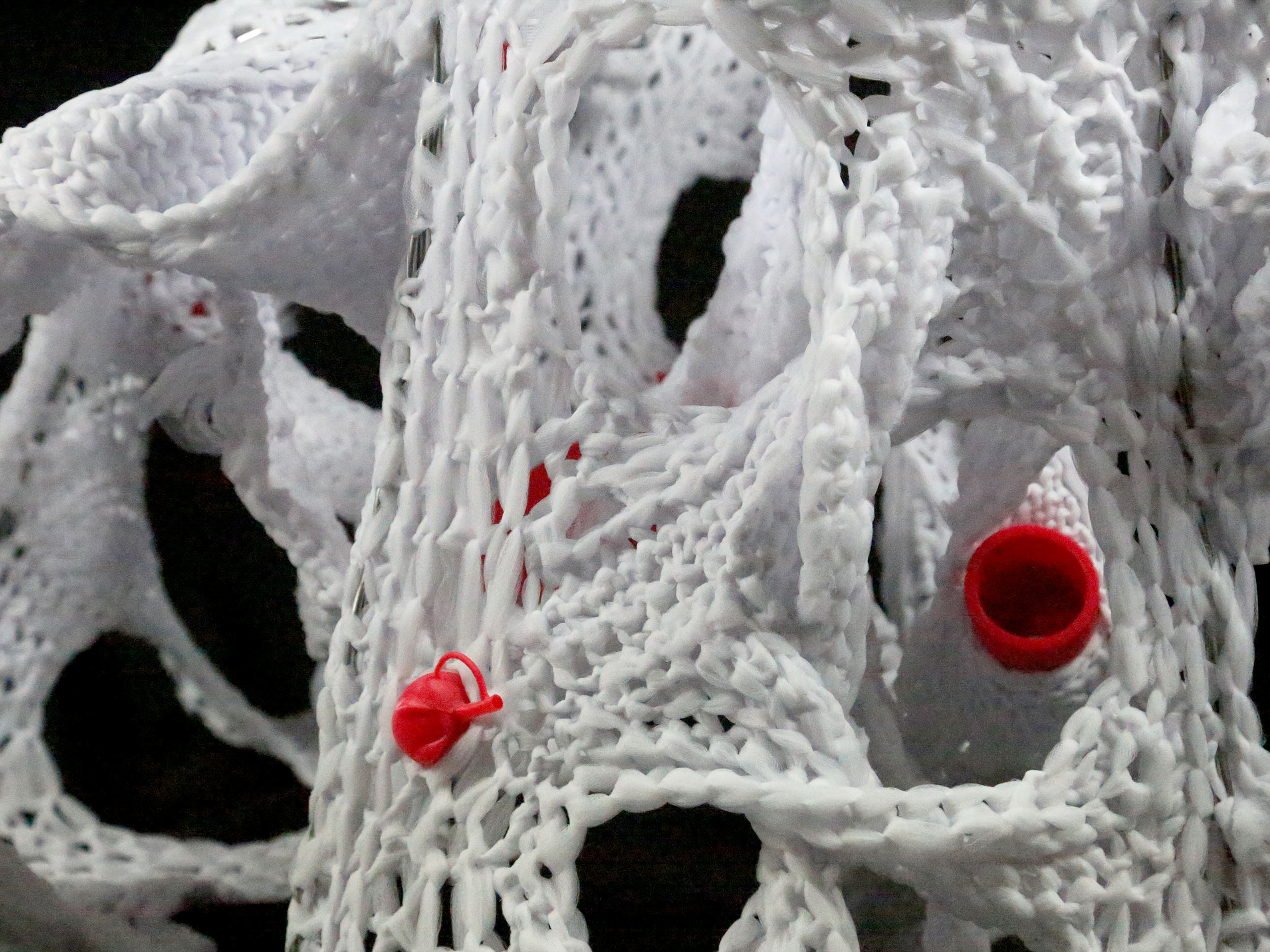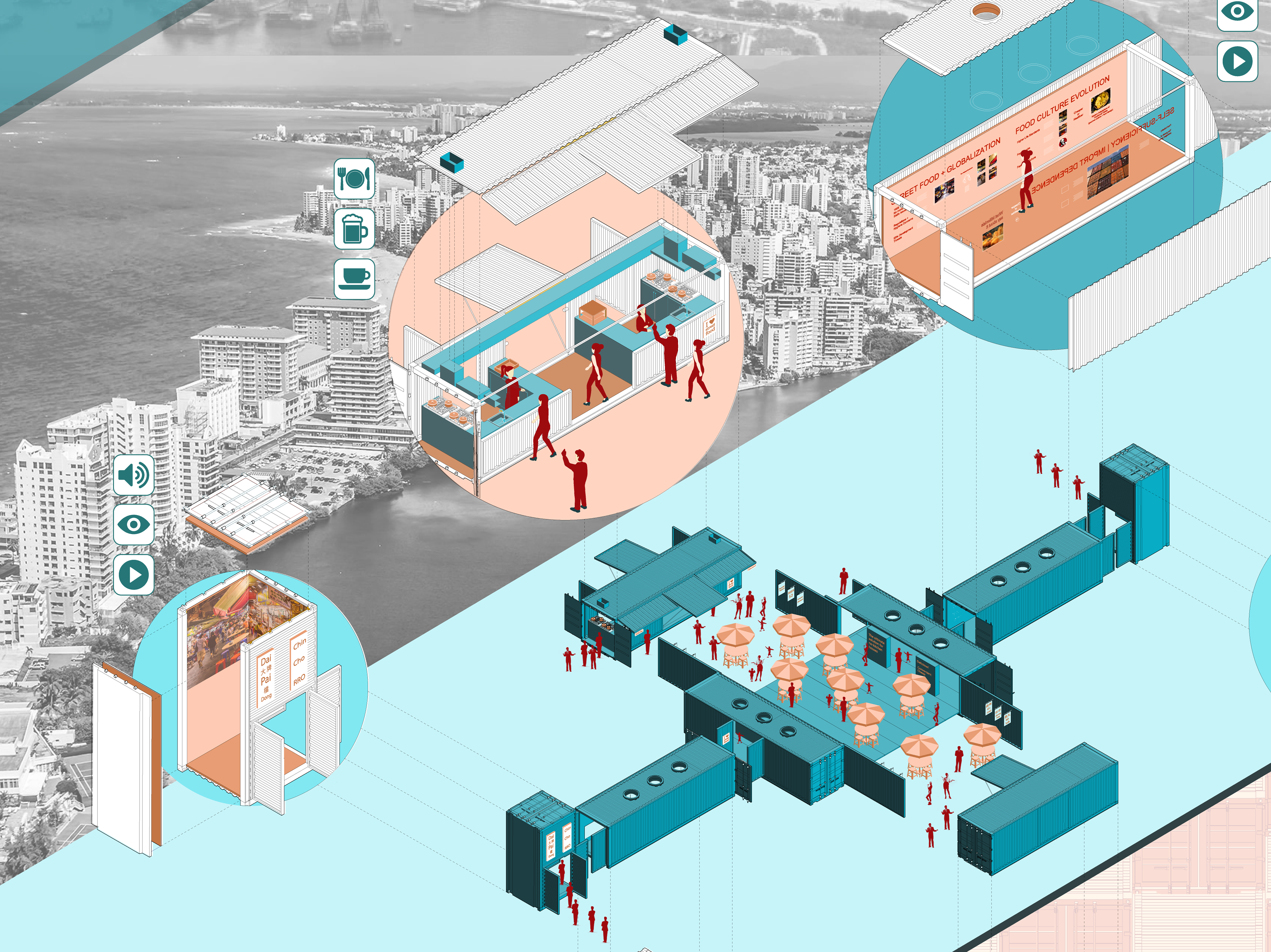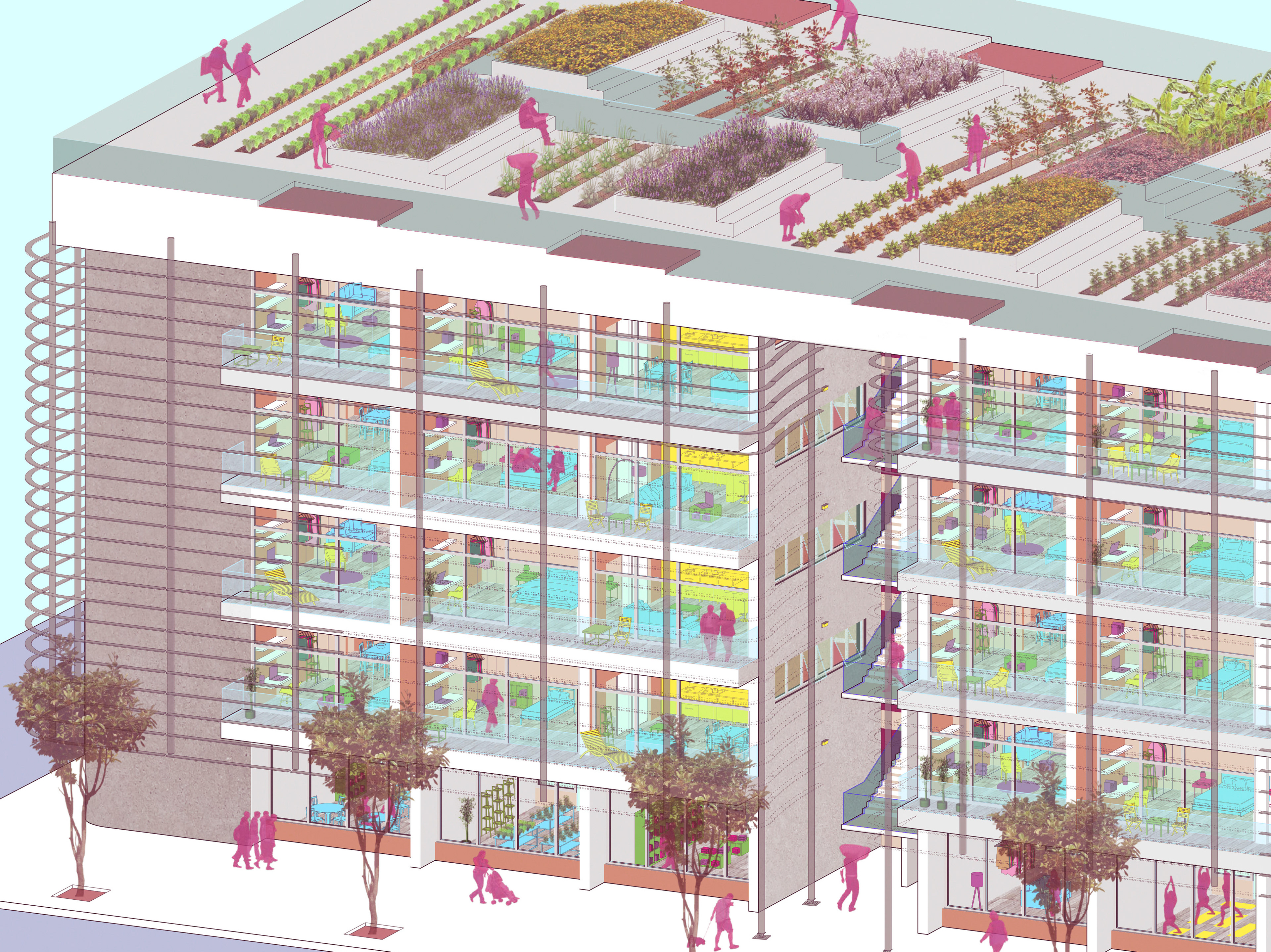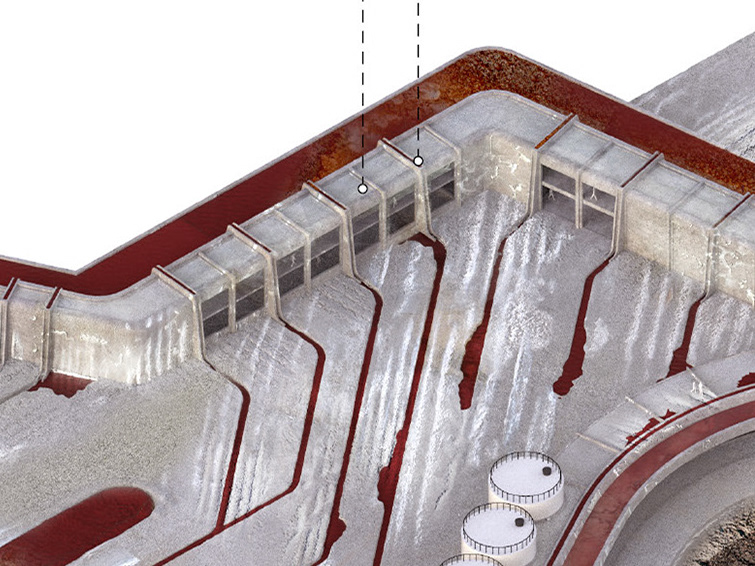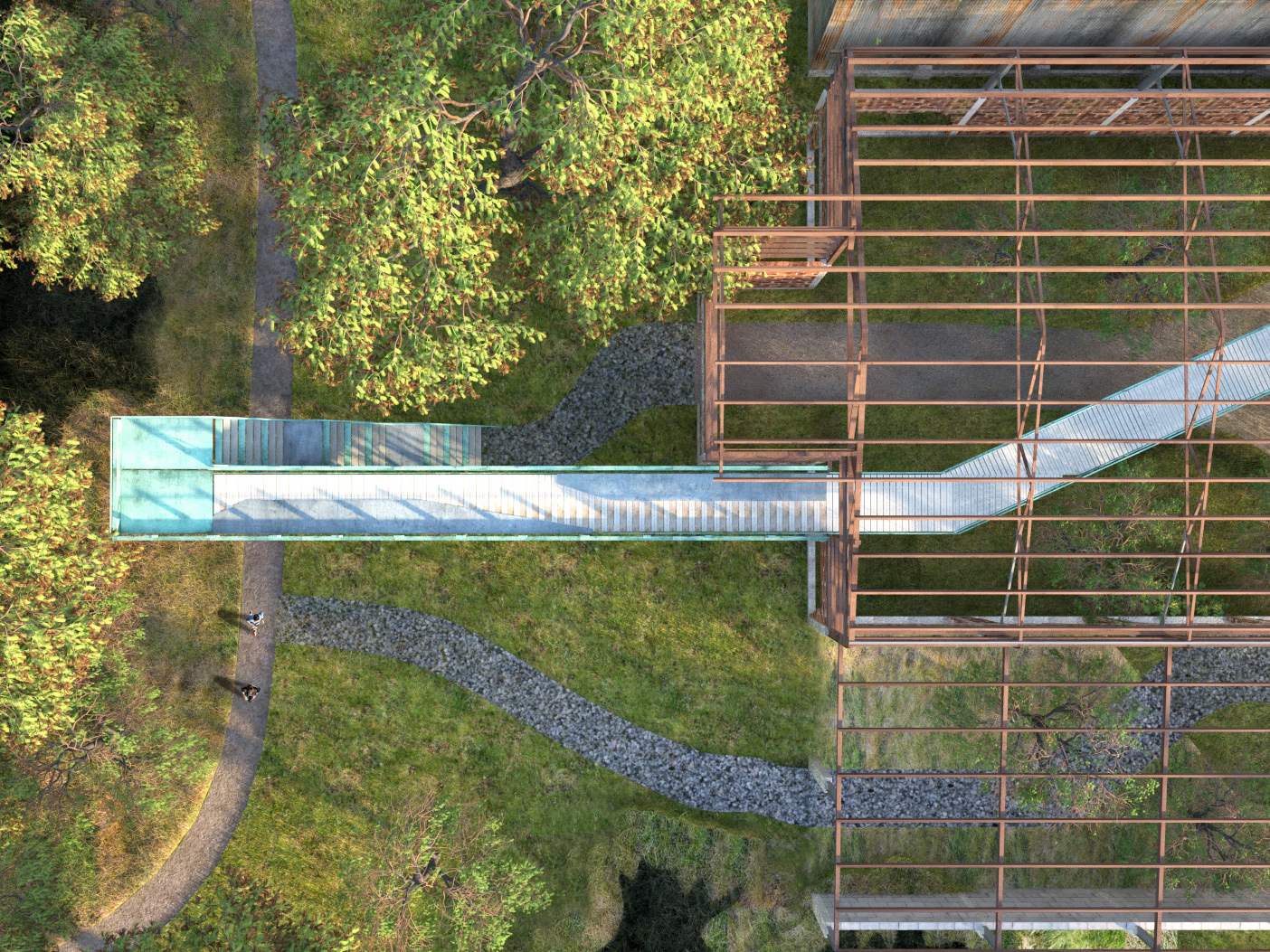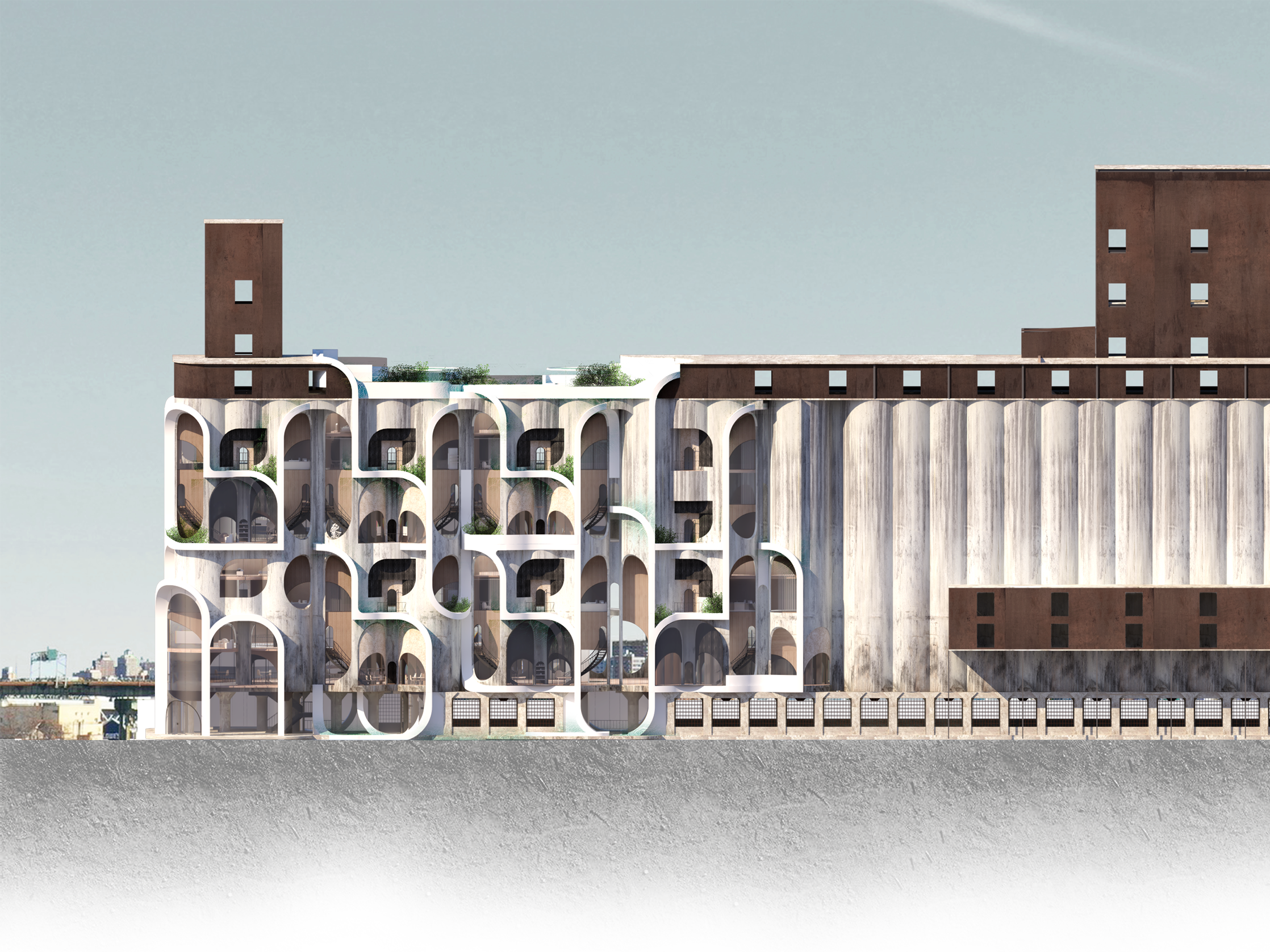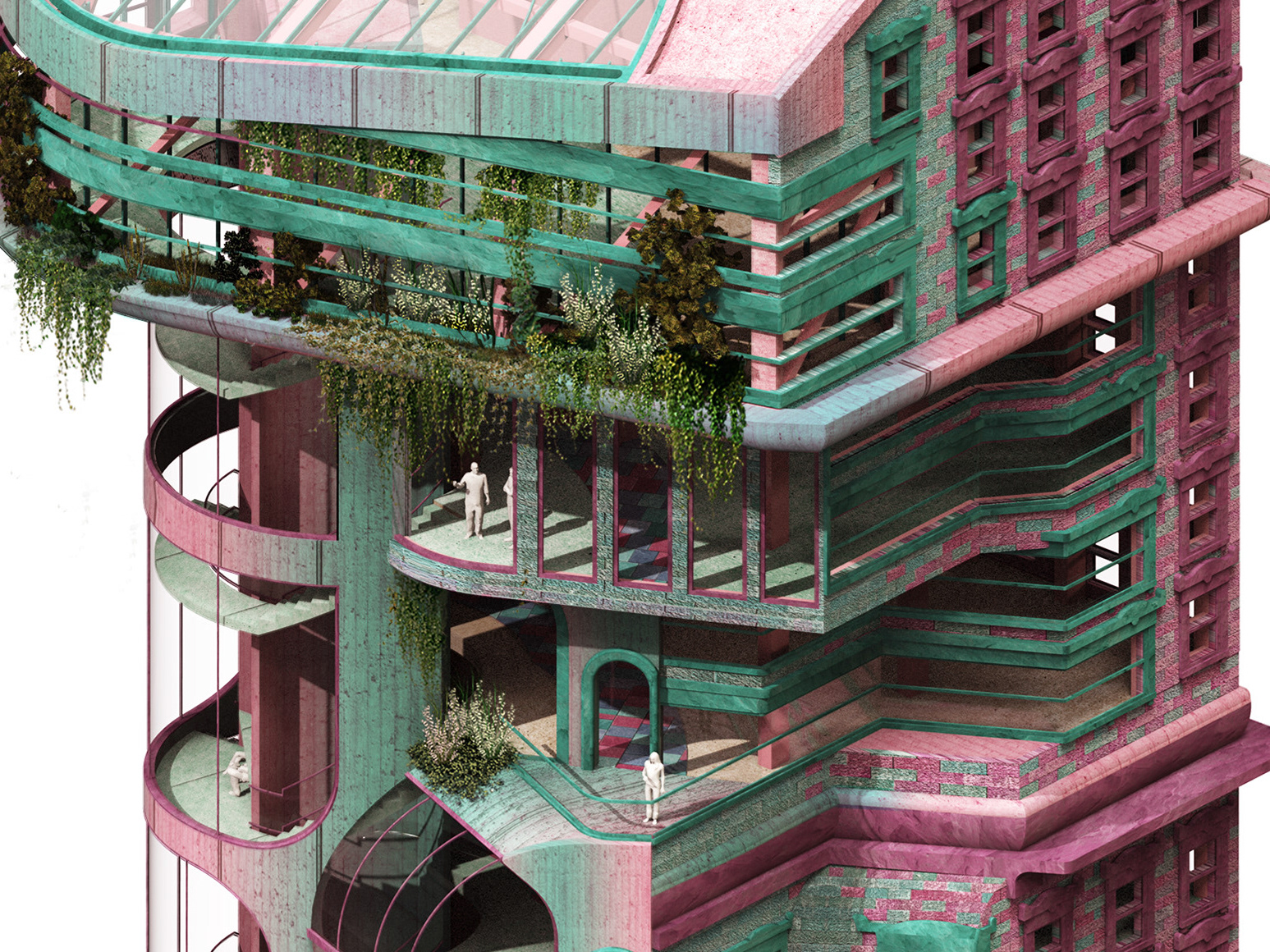Intermediate Design Studio - BA Environmental Design
University of Puerto Rico - Spring 2014
Instructors: Miguel Miranda and Julián Manríquez
When architecture is understood as an active agent, capable of adapting and transforming through behavioral complex systems, one can comprehend nature’s intuitive, primal and instinctive mechanisms as generators of organizational logics that instead emerge into a behavioral architecture not conceived as a desire or limited to a formal style. “…one and the same singularity may be said to trigger two very different self-organizing effects, the singularity is said to be ‘mechanism independent’…”
-Manuel Delanda, from War in the age of intelligent machines
The investigation aimed to study the predatory logics of one venomous, hyper sensible organism, the box jellyfish Chironex Fleckeri, also known as the “deadly sea wasp”. As simple as it is in anatomy, this organism behaves in a complex way using primitive sensory organs that command active or dormant behaviors to survive. These sensors have photoreceptors inside the retina* that provide ability to locate, move or behave depending on the scenario it is in. Scientists from the School of Marine and Tropical Biology at James Cook University, Australia, conducted a series of experiments to identify Box Jellyfish’s responses to colors. They noticed a response to blue lights. The organism’s tentacles expanded to the longest, the heart rate arose and the creature started moving in figure eight movements surrounding the light. This behavior was classified as the predator’s feeding behavior.•
-Manuel Delanda, from War in the age of intelligent machines
The investigation aimed to study the predatory logics of one venomous, hyper sensible organism, the box jellyfish Chironex Fleckeri, also known as the “deadly sea wasp”. As simple as it is in anatomy, this organism behaves in a complex way using primitive sensory organs that command active or dormant behaviors to survive. These sensors have photoreceptors inside the retina* that provide ability to locate, move or behave depending on the scenario it is in. Scientists from the School of Marine and Tropical Biology at James Cook University, Australia, conducted a series of experiments to identify Box Jellyfish’s responses to colors. They noticed a response to blue lights. The organism’s tentacles expanded to the longest, the heart rate arose and the creature started moving in figure eight movements surrounding the light. This behavior was classified as the predator’s feeding behavior.•
* retina: light-sensitive membrane forming the inner lining of the pigment layer inside the visual organs of the box jellyfish
• The organism’s way of adapting to the blue environment was dominant, as if it was demarcating or defining territory and prey.
• The organism’s way of adapting to the blue environment was dominant, as if it was demarcating or defining territory and prey.
Representing and Deploying Behavior
Understanding Chironex Flecheri's anatomical and behavioral qualities
Behavior Emergence
Understanding behavioral qualities as parameters for generative design and field appropriations
Material Experimentation and Material Emergence
Understanding emergent systems and behavioral qualities through iterative material experimentation and machine-like performances
Architectural Outcome
The final part of the investigation consisted in delivering an outcome that see architecture morphological condition that sets spatial or behavioral logics through intelligent systems or machines. Thus, one must operate and observe the system’s behavior in dynamic environments, delivering something relevant and significant for that particular ecosystem.
“As Bataille has suggested, architecture is the locale where the universality of geometry binds the base matter of temporal bodies. The regulating lines of architectural order make a connection to the world as a whole, but also to the specific morphological characteristics of forms.” (Multiplicitous and Inorganic Bodies, Greg Lynn)
Ocean and air temperatures have been rising throughout the years. From 2002 until 2011, around 215 Gt* of ice sheet were lost, up leveling the ocean by 0.6mm. It may seem a low proportion compared to the ocean’s volume, but this is a progressive phenomenon that grows faster with time. Global warming is rising sea temperatures and in result, melting the ice sheets from above as from below the glacier. The network system aims to occupy Greenland’s shores and fjords as a responsive loop that accomodates to the sea temperatures counteracting the ice sheet melting process. It works as an active-dormant machine that interacts with the water by analizing its temperatures through termodynamic sensors. It aims to be a system that works with intelligent mechanisms that understand particular heat parameters and responds to the warming water bodies using reversing methods to cool them.
*Gt: GigaTonnes, the unit measure used for ice sheet mass unbalances
